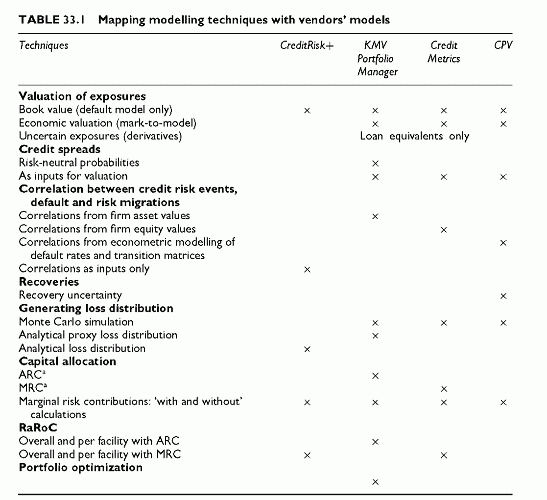OVERVIEW OF TECHNIQUES AND CREDIT RISK MODELS
Category: Risk Management in Banking
Table 33.1 maps all techniques subsequently developed in this text to the related specifications of the various vendors portfolio models. Other commercial models include Credit Monitor from KMV and RiskCalc from Moodys for modelling default probabilities, or several models relating observed ratings to observable characteristics of firms, using various statistical techniques, not included in portfolio models.
Credit Risk Drivers
This chapter details the various credit risk drivers and discusses measurement issues for standalone risk. It introduces subsequent chapters dealing with the basic credit risk drivers for standalone risk.
Credit risk is the potential loss in the event of default of a borrower, or in the event of a deterioration in credit standing. The discussion extends over four major risk components: Exposure At Default (EAD), default probabilities (DP), loss given default (Lgd) (Figure 34.1).
Exposure characterizes the amount at risk. Default and migration probabilities characterize the chances of defaulting and migrating across risk classes. Recoveries reduce the loss under default. They result from various types of guarantees, from collateral, third-party guarantees or covenants. Subsequent chapters detail each of these in terms of data availability and existing modelling techniques.
The traditional view of credit risk relates to borrowers, individuals, firms or financial institutions. Nevertheless, more and more specialized finance transactions deal with structures whose risk assessment is more challenging. The ultimate issue remains identical: what are the chances of losses and the magnitudes of losses? These depend on bundles of contractual covenants ruling the life of the structure.
The first three sections address the four basic risk drivers. The fourth section describes how standalone risk is measured. The last section addresses the issue of structure resiliency. All sections refer to subsequent chapters, which expand specific issues and models on credit risk drivers.

